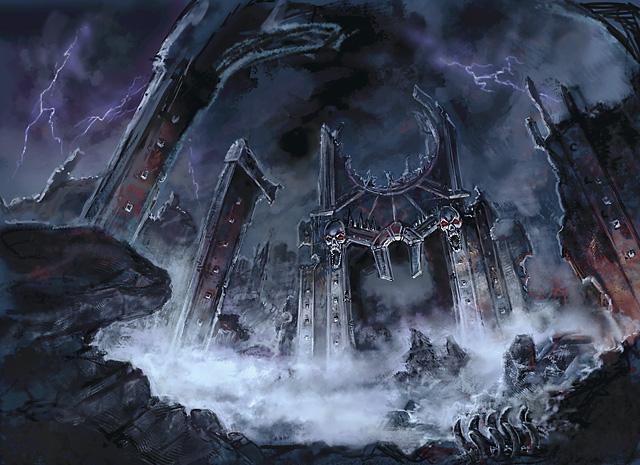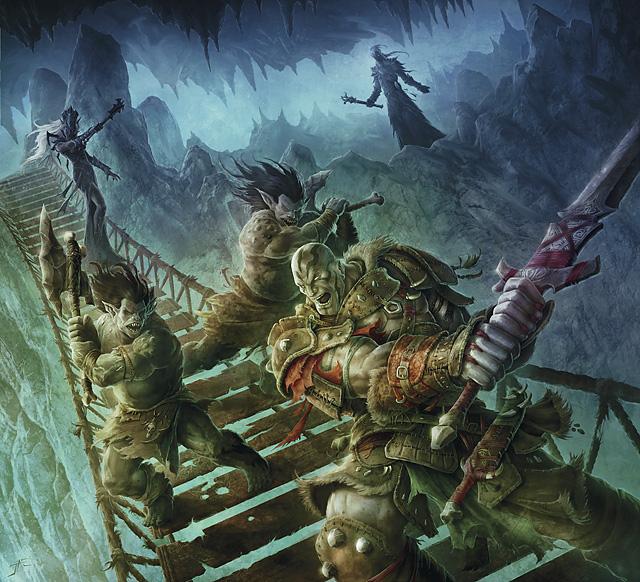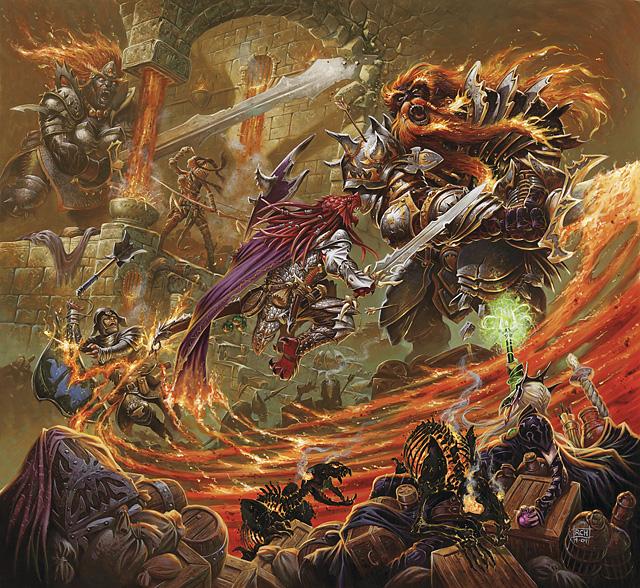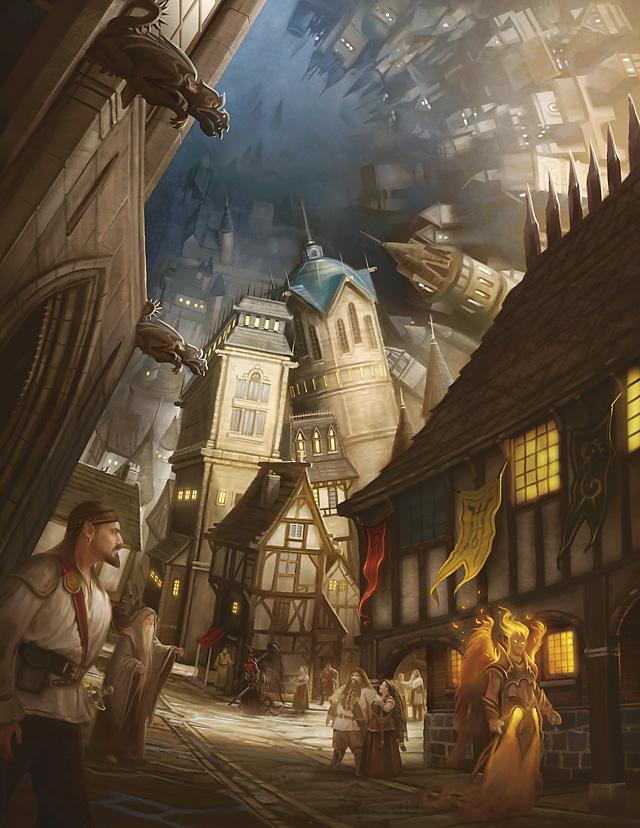
Of Dice and Men: Dungeoneering
Written by Shawn Sines on 10/5/2009 for
More On:
Of Dice and Men
Rules aren’t sexy. Books full of rules are even less so, but it appears that the latest rule-centric release for Wizard’s of the Coast’s Dungeons & Dragons 4th Edition manages to walk the line between utility and philosophy resulting in a useful expansion to the game.
Seldom does a book written for the smallest segment of the RPG paradigm inspire any excitement or hype before its release. Players devour new books looking for new options, new loot and new gear. Dungeon Masters gobble up new monster books to expand the array of adversaries they can craft their tales with. Dungeon Master’s Guides (DMGs) historically offer limited amounts of either of these attractions. D&D 4th edition finally moved the cool magic items into more player-centric tomes so the limited use that previous iterations of DMGs had at a gaming table seemed lost.
What would you fill that space with? Why how about expanding on the art of storytelling in RPGs, introduction of new systems to create a more collaborative experience for players, a new collections of traps and obstacles, a redefinition of 4E’s somewhat muddled Skill Challenge system, and the reintroduction of the ultimate munchkin Macguffin magic item – the Artifact – to D&D 4E.
Seldom does a book written for the smallest segment of the RPG paradigm inspire any excitement or hype before its release. Players devour new books looking for new options, new loot and new gear. Dungeon Masters gobble up new monster books to expand the array of adversaries they can craft their tales with. Dungeon Master’s Guides (DMGs) historically offer limited amounts of either of these attractions. D&D 4th edition finally moved the cool magic items into more player-centric tomes so the limited use that previous iterations of DMGs had at a gaming table seemed lost.
What would you fill that space with? Why how about expanding on the art of storytelling in RPGs, introduction of new systems to create a more collaborative experience for players, a new collections of traps and obstacles, a redefinition of 4E’s somewhat muddled Skill Challenge system, and the reintroduction of the ultimate munchkin Macguffin magic item – the Artifact – to D&D 4E.

The DMG 2 continues the trend established with the first tome. It outlines techniques of playing Dungeons & Dragons and offers a large section of thoughtful analysis surrounding the interplay of the folks around the table. Continuing from the “gamer types” discussion in the first guide, this edition explores rewards and tools for drawing players into the responsibility of storytelling – encouraging collaborative game modes and introducing alternative rewards so D&D can not just be about killing mobs and linking loot.
Storytelling takes up the first part of the book and segues naturally into the chapter clarifying advanced encounter design and the skill challenge mechanics. Skill Challenges are new to D&D but are not really a new concept. While a lot of traditional D&D DMs seemingly had trouble crafting appropriate skill challenges in their games, the chapter illuminates the mechanics behind the system as well as the philosophy. D&D players and GMs have a reputation in the tabletop world for being “rules bound” literalists and the official expansion of the challenge concept encourages those people to broaden their range a bit.
The most important fact related to the skill challenge system – let the players try anything, don’t restrict them if they want to try and scale a wall using their diplomacy skill – challenge them to explain how they intend to do it and then go with it. While this revelation might be basic to some, its refreshing to see it in print from the games’ creators.

The Skill Challenge section also gives some examples that can be easily integrated into adventures and guidance on which skills are most likely to be efficiently effective (reinforcing that what you may think is the best skill is not always what your players will think is the best skill).
Following the skill challenges and the game theory chapters the DMG2 falls back into more familiar territory with sections on customizing monsters, alternative player rewards, artifacts and of course how to run the game’s mid-level expanse – the Paragon Tier.
Alongside the monster customization the DMG2 also introduces some complexity that fits with the evolution of characters from early adventuring to Paragon tier – the addition of companions. These companions can be followers, lovers, friends or any of a number of characters that interact repeatedly with the players and the system presented here makes crafting those character companions more a storytelling feat than a mechanics one by offering a number of different models for DMs to use, depending on the needs of their story.

Artifacts are handled much like Weapons of Legacy from the previous version of D&D. Players can discover these mighty magical items early in their adventuring career and never realize what they are until the appropriate time. DMG2 gives good examples of iconic D&D Artifacts like the Rod of Seven Parts but doesn’t spend overlong on the items themselves. Instead, the book outlines techniques for creating memorable artifacts for your campaign.
The final part of the book outlines a setting far more appropriate to characters who’ve now outgrown their provincial beginnings. This serves as the reintroduction of the popular setting of TSR’s Planescape – Sigil. While Sigil saw some attention in the Manual of Planes a few months back, the DMG2 talks about using the setting as a hub for adventures, allowing characters access to the multiverse of D&D and includes an introduction to the setting through an adventure called A Conspiracy of Doors.

The Dungeon Master’s Guide 2 is a 223 page hardcover book. The interior illustrations are excellent and continue the high standards established in previous 4th Edition D&D books. It retails for $34.95.
* The product in this article was sent to us by the developer/company.

About Author
Shawn Sines is an avid game player who has been writing video game review and feature pieces freelance for over 9 years. He's served as the Hardware how-to writer, Mod and MMO expert, news writer and game reviewer for Filefront's Gaming Today, GameFront, The Columbus Dispatch, Columbus Alive and Columbus Parent in Columbus Ohio. He was also the co-host of GameOn! a video game podcast hosted by the Dispatch Media Group. Shawn's personal favorite genre are RPGs and Strategy, though at the latter he never claims to be very good despite hours of trying. View Profile